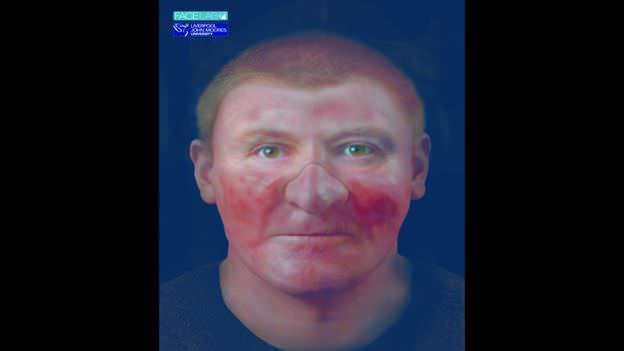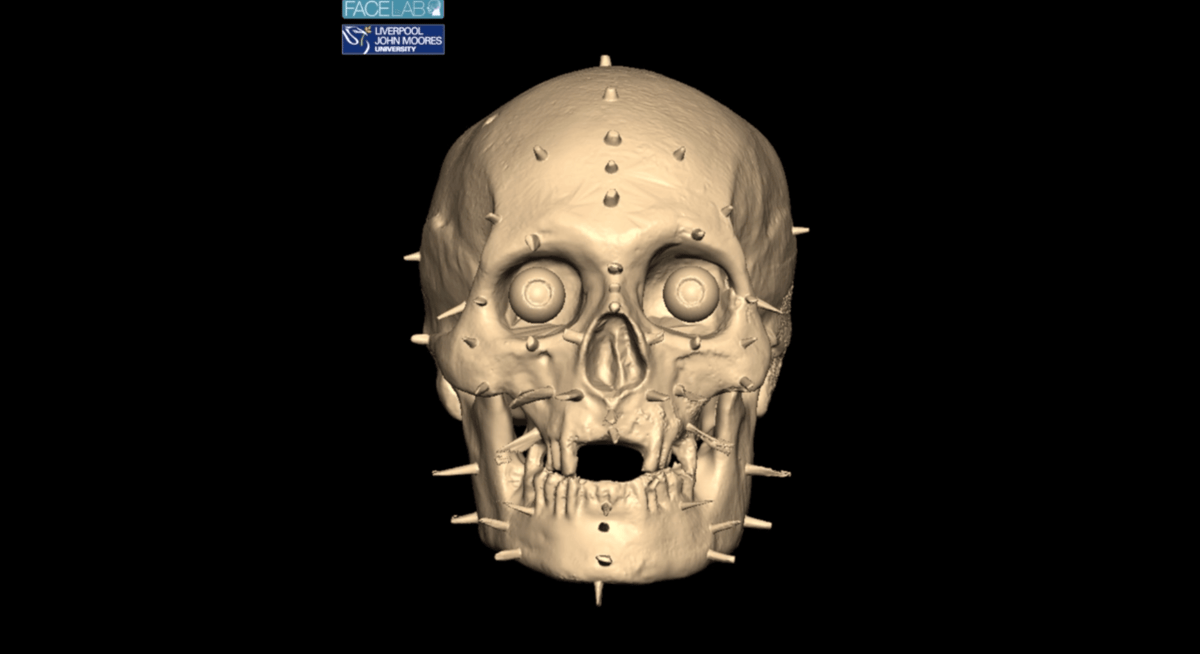Facial reconstruction experts at Liverpool John Moores University have created detailed 3D digital images of the Scottish king, Robert the Bruce.
Scientists and historians have joined forces to create detailed virtual images of what they believe to be the head of Robert the Bruce, the famous King of Scotland. The 3D virtual images were reconstructed from the cast of a human skull currently part of the Hunterian Museum.
Craniofacial experts from Liverpool John Moores University and historians from the University of Glasgow (GLA) collaborated on the project. They used all the data available on the King to create as realistic images as possible.
The result is one image which shows the King in his muscular prime. A second image depicts Robert the Bruce suffering from leprosy (see above)
Historians provided information on the King’s privileged life and healthy diet. The King is famous for leading the Scots to victory against the English at Bannockburn in 1314. He also campaigned in northern England and Ireland to legitimise his kingship and free his kingdom.
However, as the second image shows, the historians noticed signs of leprosy. They believe this illness disfigured his upper jaw and nose of the skull. Bruce likely suffered from an unidentified ailment, possibly leprosy, which probably killed him.
3D Digital Images Bring Robert the Bruce to Life
No contemporary artworks are available to reliably show what King Robert actually looked like. Instead, Dr Martin MacGregor, senior lecturer in Scottish history GLA and leader for the project had to improvise.
He requested the expertise of Professor Carline Wilkinson, Director of LJMU’s Face Lab and a world-renowned craniofacial identification expert. The Face Lab specialises in recreating likenesses from archaeological and legal evidence. Their most famous work is the face of Richard the Third.
Professor Wilkinson said: ”Using the skull cast, we could accurately establish the muscle formation from the positions of the skull bones to determine the shape and structure of the face. But what the reconstruction cannot show is the colour of his eyes, his skin tones and the colour of his hair.”
Using skeletal and historical materials available, MacGregor and Wilkinson produced the most realistic appearance of the King to date.
Professor Wilkinson added: “In the absence of any DNA, we relied on statistical evaluation of the probability of certain hair and eye colours, conducted by Dr MacGregor and his team, to determine that Robert the Bruce most likely had brown hair and light brown eyes.”
Interested in finding out more? A documentary called Ceann an Rìgh (The King’s Head) will screen on BBC ALBA on 15 December at 8.30pm. The program will follow the reconstruction team from the beginning to end of the project.
Source: Liverpool John Moores University
License: The text of "3D Images Show Scottish King Robert the Bruce in His Prime" by All3DP is licensed under a Creative Commons Attribution 4.0 International License.


